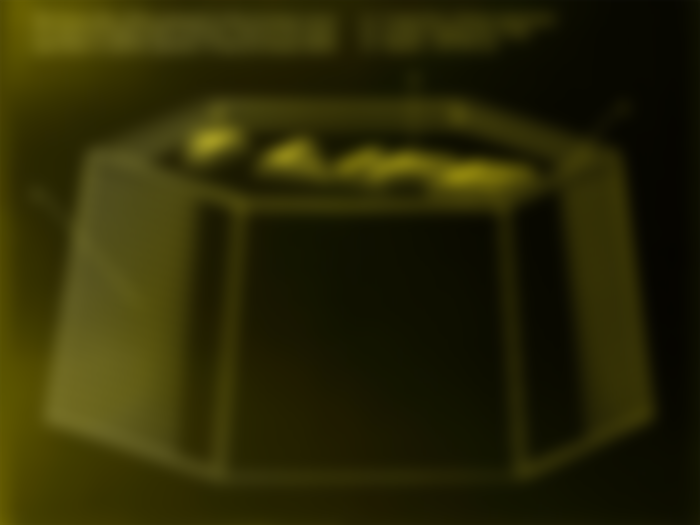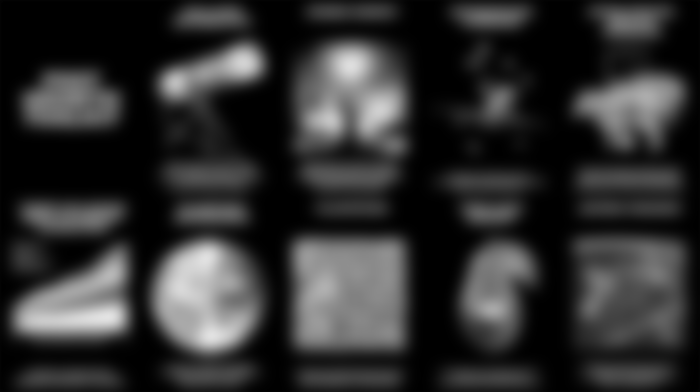Who wants to spend their now precious family meals talking about concepts as abstract as carbon emissions, planetary limits or the impact of the Anthropocene? No one. Fortunately, the artistic collective Disnovation offers, on the occasion of its latest “Post-Growth” exhibition , a toolbox filled with simple, colorful and tangible concepts to talk about the post-growth world. We have selected nine to help you close 2020 without a brain break.
Stop for a few seconds and think about what the phrase “post-growth society” means to you. Do you see a radiant world, bright tomorrows and a field of possible futures? It is rather unlikely: " These notions do not circulate outside the academic world, because they have no image, no visible surface outside the pure literary register " regrets the artistic collective Disnovation.org (composed of Nicolas Maigret, Baruch Gottlieb, Pauline Briand, Julien Maudet and Clemence Seurat). Even in the most alert circles, the concepts that circulate to represent the "world after" remain abstract at best. Who really wants a post-anthropocene or waning world?
However, our lifestyles must change, and quickly. To achieve this, the sociologist of science and technology Geoffrey Bowker , interviewed by the collective, recommends a “Gestalt effect”, that is to say a global shift in perception, during which an image successively takes on two opposite meanings ( for example, the same design that evokes both a duck and a rabbit). “ How do you get someone, or a group of people, to suddenly see the world differently? Geoffrey Bowker asks. " You don't do it just by hitting them in the head with facts, you do it by telling stories, by sketching possible futures ."
So, so that the “next world” does not remain wishful thinking, the collective takes a step aside to tell the story of our evolution with less bland words. And take advantage of its latest exhibition “Post-Growth”, on the occasion of which Gaîté Lyrique organized a series of meetings in which Usbek & Rica is a partner, to create a real toolbox against dominant narratives in the form of interviews experts , to help everyone find their way around a world in crisis.
What if we said “ negaWatts ” rather than “energy sobriety”?
In a world of increasingly scarce resources, why calculate the energy consumed and not the energy saved? To support this opposite to the dominant narratives, Disnovation returns to the concept of negaWatt , a theoretical unit of power which makes it possible to measure the energy sobriety of a device. The American ecologist behind the concept, Amory Lovins, winner of the “Alternative Nobel Prize” - the Right Livelihood Award - also proposed a secondary electricity market, allowing those who save energy to resell their negaWatts to others.
Interviewed by Disnovation, computer science professor and UCI researcher Bill Tomlinson invites us to adopt the idea of “Negatechnology” more broadly, that is to say no longer the sophistication of our products and services but their simplicity. " This can be an important lever to push back the cult of growth and progress which currently prevails in industrial civilization ", he concludes.

What if we said “ terraformation” rather than “anthropocene”?
Anthropocene , capitalocene , phagocene ... we have no shortage of words to designate the negative impact of modern man on his habitat, the Earth. But these concepts systematically refer back to back humans and the rest of the living. This is why Geoffrey Bowker returns to the origins of another word, that of “terraforming”, which literally means “shaping the earth”.
He explains that, for a living organism, changing the world is not surprising: moreover, “ the Earth has always been a place of change. ". Several billion years ago, the very first bacteria, called “archaea”, were already changing their own environment. The simple functioning of their metabolism thus contributed to charge the Earth's atmosphere with 20% oxygen. This transformation of the earth's space necessary for life, or "terraformation", then allowed other forms of modern life to appear.
We, as humans, are moreover forms of life modified by other forms of life which inhabit our bodies. " In the same way that we as a species terraform the Earth, life itself adapts and changes every individual that we are." ." A way of remembering that there is not nature on one side and humans on the other, but a “dance of life” which passes from one living body to another. And to imply that by destroying the Earth, we are destroying ourselves.
What if we were talking about " energy slaves " rather than liters of gasoline or kWh?
How long would it take a human to produce 1 kWh of electricity at the sheer force of his body? This is the question behind the concept of the energy slave. This idea, introduced by the American inventor and prospectivist Richard Buckminster Fuller in 1940, is a new unit of energy measurement that translates the kWh consumed by our machines into calories consumed by humans. Fuller estimates that throughout our modern world, each human being has on average the equivalent of several dozen energy slaves working in his service.
On the occasion of the Post-Growth exhibition, Disnovation revisits the concept by creating Energy Slave Tokens : a series of bitumen weights that represent the energy supplied by a human in 1 hour, 1 day, 1 week, 1 month , 1 year and 1 life. The staging shows the violent contrast between the power provided by the human body and that provided by our fossil fuels.

What if we were talking about “ancestral sun shares” rather than oil?
Where does the oil come from? From the pump? From a pipeline? From the depths of the earth? Because its origin can sometimes be abstract, Disnovation recalls that fossil fuels are the result of millions of years of radiation from the sun on plants, transforming them into oil, coal and natural gas. An idea notably stemming from the novel The last hours of ancestral sun (Ariane, 1999) of the American author Thom Hartmann.
For the Post-Growth exhibition, Disnovation takes this idea even further by creating Solar Share corners in plastic (and therefore in “ancestral sun”) that countries could divide up according to the sun they receive and the sun they receive. 'they consume.
" How could our understanding of economics change if the instruments we use for money were of equal value to the solar energy needed to produce them materially?" »Asks Disnovation. Their Solar Share Coins are precisely the answer to this question since a few grams of plastic have the same energy power as 1m2 of annual sun in Brussels.
What if we spoke of “preservation of sister species” rather than “preservation of biodiversity”?
Since the world is constantly changing, why want to freeze the evolution of species? “ Species are going to die, species are dying all the time, that's okay,” says Geoffrey Bowker. What we have to do is allow new species to be born ”. For him, there is no question of trying to save all species at all costs, it is better to ensure the preservation of " sister species" whose genetic structure is sufficiently close so that they can reproduce and create a new one. species, adapted to the current climate situation. In short, favor adaptation to conservation.

What if we said “ ecology ” rather than “environment”?
In common parlance, we mix up the terms “environmental” and “ecological” at will. Yet the use of either of these terms reflects two different ways of looking at our relationship to nature, says environmental systems, technology and extremes anthropologist Valerie Olson. “ The environment is a particularly spatial term that refers to limits and the notion of periphery, ” she explains. Ecology transcends that thanks to its prefix eco-, and implies more the idea of a relationship ”.
What if we were talking about “ transfers of wealth ” rather than an environmental catastrophe?
Speaking of environmental disaster, we are led to believe that what is happening to us is an accident. That humans, ultimately, have nothing to do with the destruction of their own environment.
This is why Bill Tomlinson introduced the idea of a triple "transfer of wealth" that humans would have operated of their own accord and for their own benefit. First, a transfer of inter-species wealth, since humans have siphoned off the resources of the different living species on earth to dedicate them to their own use. Then a transfer of wealth between populations, because humans have centralized this wealth in the most developed countries and places with higher population density to the detriment of other regions. Finally, a transfer of wealth between generations, since the contemporaries of the twentieth and twenty-first century squander the resources that their ancestors accumulated over millions of years, at the same time depriving future generations of the enjoyment of these resources.
" The default mindset of industrial civilization and the world of computer research is to consider how we can increase our wealth without worrying too much about where it comes from, " Bill Tomlinson analyzes. " Wealth transfer potentially provides a mechanism and a framework for thinking about how we can reverse this trend ."
What if we looked for “ auto-obsolescent systems ” rather than digital detox?
Those who have seen the documentary The Social Dilemma know it, and Bill Tomlinson confirms it: “ It's hard to have the will [to disconnect] in front of your screen when the work of a thousand engineers on the other. side of the screen is to blast this will ”.
Because there is little we can do against systems specifically designed to make us addicted , the solution must necessarily be placed at the very heart of those systems. Could auto-obsolescence be the key to our digital weaning… and to energy sobriety? “ A self-obsolescent system is a computing system that tries to make itself less and less necessary for the functioning of the system in which it is integrated,” explains Bill Tomlinson.
This operation already exists in educational systems, dedicated to empowering their users. In the future, it could be extended to our food system - an application accompanying us in the cultivation of our garden to autonomy. And questioning the very business model of social networks.
What if we were talking about “ post-growth ” rather than growth?
What if, ultimately, all the excesses of our modern societies came from our collective cult of growth? In the scientific world, but also in Western religious precepts, "growth is understood as the equivalent of life and not growing is equivalent to death " explains Valérie Olson.
The decrease, or even the absence of growth, therefore causes “ cosmological, metaphorical and discursive anxieties ” in our societies. The anthropologist nevertheless recalls that " growth is not a monolithic idea ", and that it can be slow, stagnate, slow down or put on standby for a given time. She concludes: “ We can look at life and death not as opposing things but as a continuum, and consider growth as a modality in this continuum, ” she explains. This would allow us to think differently about what it means to be alive ”.


